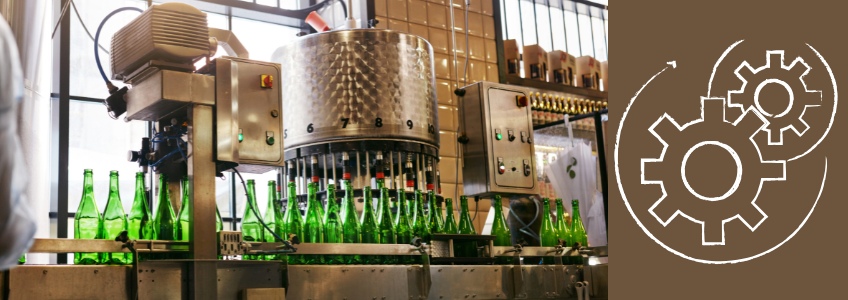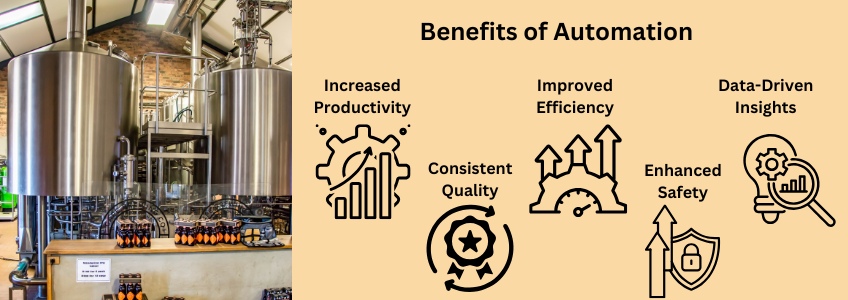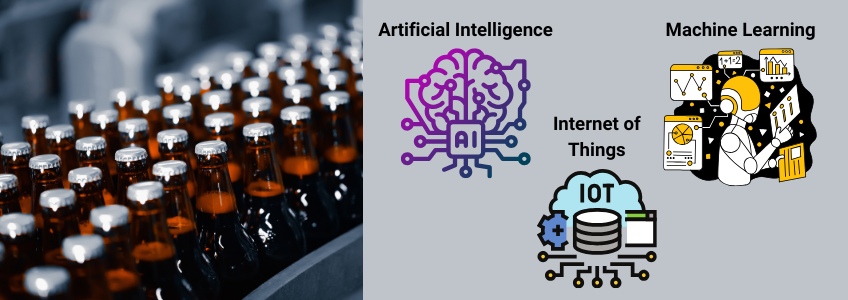
Introduction
The brewing industry, long rooted in tradition and craftsmanship, is undergoing a major transformation with the rise of automation and smart technology. Automation is now revolutionizing brewing processes, allowing for higher productivity, consistent quality, and operational efficiency.
This post will explain how automation is reshaping the brewing industry, highlight its key benefits, break down its implementation across different stages of brewing, and provide a glimpse into the future of brewing technology. Whether you’re a small craft brewery or a large-scale production facility, this guide will help you understand why automation matters and how to embrace it for long-term success.
What is Brewing Automation, and Why Does it Matter?
Brewing automation refers to the use of sensors, software, and control systems to streamline every stage of the brewing process. Tasks like milling, mashing, fermentation, and packaging can be managed with precision through automated systems. This ensures consistent, high-quality beer production while reducing manual labor and errors.
Why does this matter? As breweries scale up production, maintaining consistency and meeting consumer expectations become critical. Automation addresses these challenges by optimizing production, enhancing safety, and offering valuable data insights for better decision-making.
How to Implement Brewing Automation
Step 1: Automate Milling and Mashing
Automated milling systems ensure that grains are ground to a consistent size for maximum sugar extraction. Automated mashing systems control temperature and timing, optimizing sugar conversion for a uniform wort every time.
Step 2: Automate Wort Boiling and Hop Addition
Boiling systems that are automated manage the wort composition, ensuring consistent results. Automated hop dosing precisely adds hops at the right intervals for optimal flavor and aroma extraction.
Step 3: Implement Automated Fermentation Control
It should be noted that automated fermentation systems continuously monitor and control critical parameters like temperature and pressure. This ensures optimal yeast activity, resulting in consistent fermentation profiles and improved beer quality.
Step 4: Upgrade Filtration and Clarification
Automated filtration systems maintain clarity and remove unwanted particles from the beer. Not only that but, automated centrifuges also efficiently separate solids, enhancing both product quality and yield.
Step 5: Streamline Packaging Processes
Automated systems for filling, labeling, and packaging can also handle large volumes with minimal errors. This ensures efficient and consistent packaging, allowing breweries to meet demand while maintaining high standards.
Key Benefits of Brewing Automation

- Increased Productivity: Automated systems run 24/7, increasing production capacity and freeing brewers to focus on recipe development and quality control.
- Consistent Quality: Automation eliminates human error, ensuring consistent flavor, aroma, and appearance across batches.
- Improved Efficiency: Optimized resource usage minimizes waste and reduces water and energy consumption.
- Enhanced Safety: Reduced manual handling of heavy or hazardous equipment creates safer working conditions for staff.
- Data-Driven Insights: Automation collects brewing data that can be analyzed to improve recipes, identify issues, and optimize processes.
The Future of Brewing Automation

- Artificial Intelligence (AI): AI can analyze brewing data to refine recipes, predict fermentation outcomes, and flag potential issues early.
- Internet of Things (IoT): Connected devices enable real-time monitoring and control of the brewing process from anywhere.
- Machine Learning: Historical data analysis helps identify patterns, optimize parameters, and further improve efficiency and consistency.
Examples of Automation in Action
- Smart Fermentation Monitoring: Continuous sensors provide real-time data on temperature, gravity, and pressure, allowing for immediate adjustments.
- Automated CIP Systems: Cleaning-in-place systems automate equipment cleaning, reducing downtime and ensuring sanitation.
- Robotic Packaging Lines: Robotic systems automate tasks like case packing and palletizing, increasing throughput while reducing labor costs.
Conclusion
Automation is revolutionizing the brewing industry, allowing breweries of all sizes to increase productivity, improve quality, and optimize resource use. By embracing smart technology, brewers can focus on their craft while automating repetitive tasks. As the brewing industry continues to evolve, the future is set to be even more automated, data-driven, and innovative.
If you’re ready to explore how automation can enhance your brewing operations, contact us today for a consultation.
